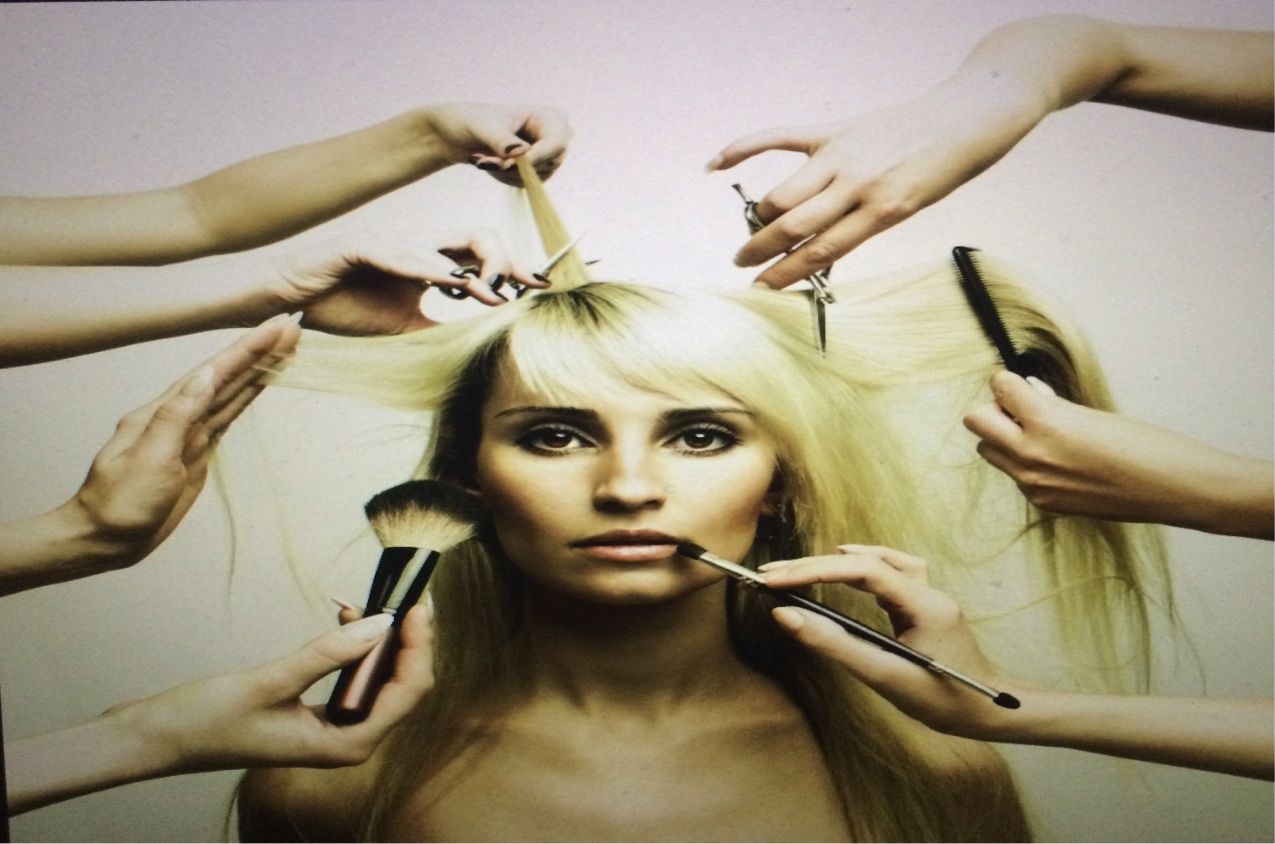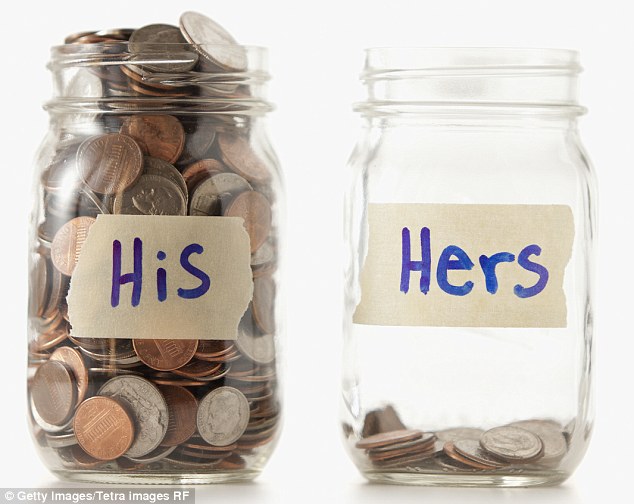Makeup: Creative or Crippling
Makeup first seemingly appeared a in Ancient Egypt, smudged around the eye in what we today would call eyeliner. But back in the early ages of BC, Egyptian women used kohl. Kohl is a substance made out of easily accessible resources at the time. Such ingredients include lead, ore, copper, burn almonds and ash, among a few others. Kohl became the first true female makeup product, used as eyeshadows and an eyeliner. Kohl is also seen as an ancient eyeliner in India during the Gupta Age from the 3rd to the 5th century A.D.
This cosmetic also became popular as an eyeshadow in Ancient Greece. Believe it or not, having a unibrow in Ancient Greece was considered to be a thing of natural beauty. Greek women during this period even went so far as to cosmetically apply fake animal hair in between their brows.
Lipstick has been existent since prehistoric times, using it as a lip taint and made from natural resources. Such material includes fruit and plant juices, and even animal blood. It it also noted that Mesopotamian women were the first true creators of lipstick. They used a method of crushing jewels to make it into bold lip stains. Lipstick gained popularly in Ancient Egypt and Ancient China. Yet, it was the Elizabethan era that lipstick gained a stronger global popularity. A strong lip was the feature that stood out the most. It contrasted the pale, powdered skin, to appear more pale, and the lack of eye makeup and eyebrows.
We then skip to the Victorian Era, where minimal to no makeup was valued in society. Women who could afford it, used face cleansers to achieve the look of clear, young, and healthy skin. Any type of rouge or blush during this period could be viewed as tacky or pertaining to low class.
[youtube id="g08-_NExOX0"]
From the beginning of makeup during the prehistoric era, cosmetics have been made to change an individual's appearance. Hunters used makeup to better camouflage themselves while tracking down prey. Others employed cosmetics to show their devotion to their gods and their beliefs. Even Ancient Egyptians used eyeliner as a statement of class and power, in both men and women. Some scientific research even suggests Egyptians may have used it as a preventative for bacterial infections. But somewhere along the way, makeup became a social pressure and an expectation for women to wear makeup.
Makeup is becoming more openly accepted for men to have the creative freedom to explore and use makeup. However, the concept around makeup can be crippling for women. Women are expected to live up to higher standards than possibly attainable. Many boys and men don’t have the social pressure put on them of in terms of wearing makeup. However, this does not mean that that isn’t a social pressure of conformity in itself for men.
One study showing men and women’s skin reveals that women having a lower pH in terms of their skin. This means that it is overly acidic and oily in nature. Such a report of genetically born females tends to be linked to female hormones, menstrual cycles, and pregnancy. The pressure for females to have “perfect” skin is a struggle and is unbearable for many women.
I remember getting ready for a party once. I was so upset with the appearance of my skin after picking at it all week. Despite trying to cover it up, I just couldn’t. I ended up staying in my bed in the dark, and watching Gilmore Girls re-runs all night. All I could think about was that I didn’t want a room full of people looking at me and thinking “ew.” Even though that is completely untrue and no one could give a single fuck about what my skin looked like. But my own psychological obsession around this concept of women needing to have perfect skin to openly co-exist was falsely stuck in my head.
While makeup can be fun to experiment with, I believe that the conceptions surrounding painting your face, so to speak, should be fun. It should not a social pressure or a fear of not looking up to other’s standards when in public. The presumption that all women have to walk around with defined brows or a sharp winged eyeliner or contouring that is “on fleek” every time they walk out of the house is ridiculous. While all of these cosmetics may enhance your beauty, it is not the foundation of your beauty. You are.
Women AREN'T Equal Yet
Recently, I posted about the issues college graduates face after the ceremony is over and they begin the struggle to find a job. However, the injustice of the job market is more complex than this.
In the past 25 years, equality for men and women in the workplace seems like it has come a long way. However, as the statistics show, this is not the case. In 1990, it was reported that the difference between male and female college graduates was an hourly wage of $17.78 (men) and $16.45 (women). In 2015, it was reported that college educated men gain an hourly wage of $19.64, while their women “counterparts” only obtain an intake of $16.56 an hour. Not only has the gap between male and female college degree holders widened, but women have only come so far as a 10 cent increase over the past 25 years. Both sexes have gone through college, and have the same debt to settle, yet one will presumably be debt free soon simply because of the sex they were born into.
There are various factors that are considered when understanding how this pay gap is broken down. Every state has a different median annual earning, and every state has a different gap percentage. While Washington D.C. has established a 90% pay gap between men and women as of 2014, the numbers are different everywhere. On the lower side of the spectrum is Illinois, for example, where women earn only 79% of men’s wages for full-time employment. Such prejudices are not only limited to sex, but also include a wage gap of race and ethnicity. The fracture in income between an African American woman and a white man is 63%. The difference between Hispanic or Latino women and white men is nearly 56%.
So how can we push forward to solve this issue? We need to put in place an equal payment plan for every individual, regardless of sex, race, or ethnicity. Whether that be taking the gap money between men and women and ethnicity, and at the very least splitting it equally among everyone. Or increasing womens’ pay to what they rightfully deserve. Either way, the system demands change, and this would be a start.
Yesterday, my mother told me that this goal would never happen by the end of her professional life-time. How can we strengthen organizations like the National Committee on Pay Equity, whose annual equal pay day was celebrated just last month. And yet made up holidays like sibling day, which is two days before equal pay day, get more buzz. Why is this critical issue seemingly tossed aside? We need to start by spreading the word. Talking and strategizing are the key to educating others, which is the first step in making this idea a reality during our lifetime. The change starts with you, the one person that can change your situation and help lend a hand in changing others’ circumstances.
[youtube id="9ilSeJ6B5ro"]
As Daniel Craig once said, “Women are responsible for two thirds of the work done worldwide, yet earn only 10 percent of the total income and own 1 percent of property. So, are we equals? Until the answer is yes, we must never stop asking.”


